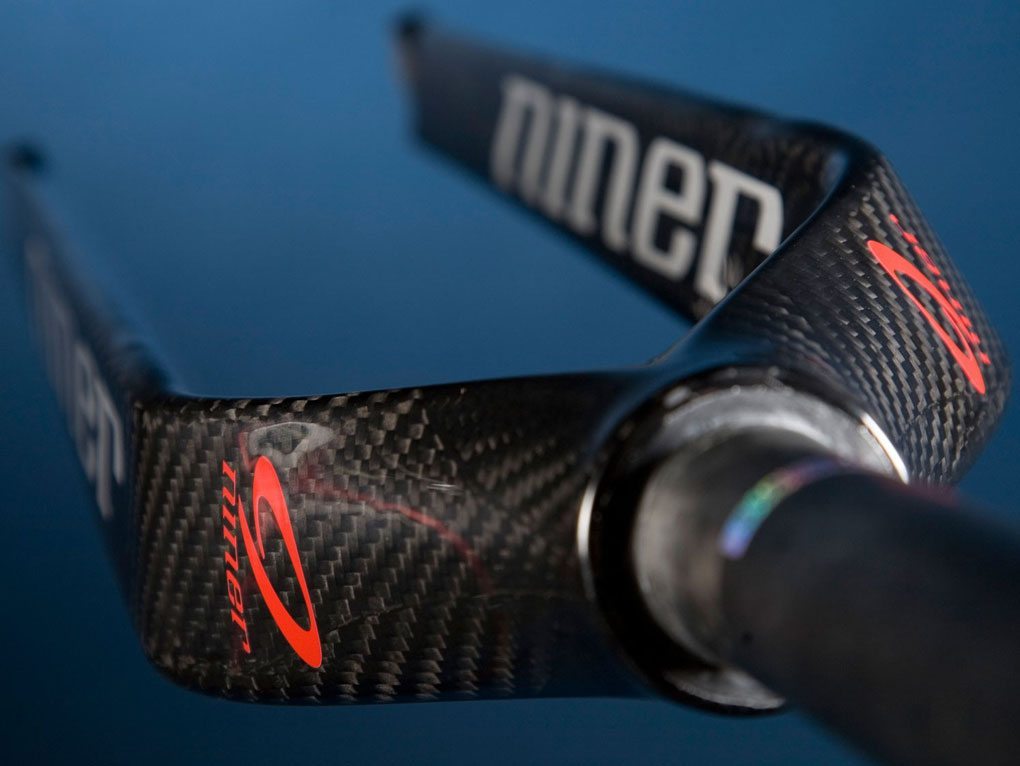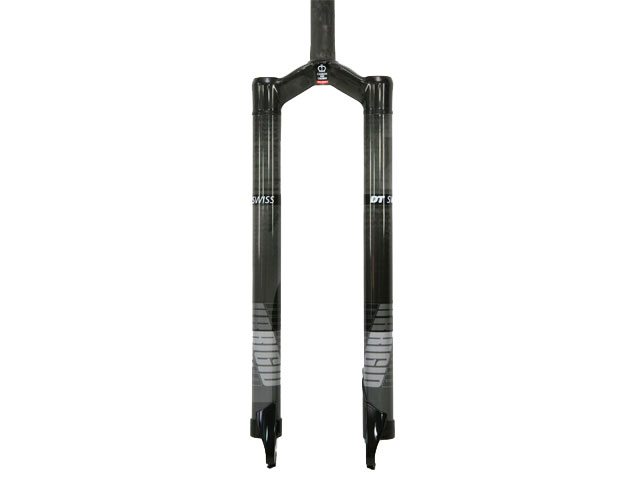 Product: Niner Bikes Carbon Rigid Fork
Product: Niner Bikes Carbon Rigid Fork
Intended Use: XC, Trail
Specifications:
- 470mm axle to crown length
- 45mm offset
- Disc only (Post mount)
- ~ 565 grams (real weight)
- No rider weight limit
- Disc rotors up to 185mm
- Available in numerous NINER colors (unfinished for custom paints available as well)
- Forward facing dropouts (with laminated alloy plates)
- Available in 1-1/8th (all colors) and tapered (only white and tang orange)
Test Location: Colorado Front Range. Steep, fast, rough, rocky trails. Generally in dry, dusty, loose-over-hardpack, pebbly terrain.
Rider: 6’2”, 205 lbs.
Duration of test: 15+ days of riding
Test Bike: 2011 Canfield Nimble 9 (29er) bike, setup both single speed and geared
Something about me loves riding rigid forks. It’s painful, brutal, kind of inefficient—really, it’s purely masochistic. But, man, it sure can be fun, too. Through the years, I randomly get bored with my hardtail and with the local, close-in trails, so I’ll toss a rigid fork on a bike to shake things up. It turns a boring ride I’ve done a million times into, well, a terrifying, death-defying, awesome new trail.
Riding rigid also really serves a great training purpose for trail, enduro, and DH racing. It forces you to take the fast and smooth line; it exaggerates the need to control and manage your body English; and it requires you to brake earlier when it’s smooth rather than riding your brakes through stutter-bumps or choppy rocks.
I have ridden most of the top-end, cool-guy rigid forks over the years (Kona Project 2, Independent Fabrications rigid, assorted Ti forks, White Bros carbon rigid fork, DT Swiss Carbon Rigid Fork), and the important thing to understand when selecting a rigid fork is how rigid you really want the ride to be. There will always be a tradeoff between smoothness, comfort, stiffness, wheel traction under braking, etc.
I am a DH racer at heart and therefore try to descend technical terrain on a bike with more speed and tire angulation than most folks. Because of this, I actually prefer a little bit of give in rigid forks to allow for increased traction under braking and steering. Compared with ultra stiff, nearly unbendable forks, this small amount of give in the fork blades offers a small level of compliance and increases the grip.
I found the Niner Carbon to ride very rigid—very, very rigid. It steers awesome on hard-packed trails, with the bike more upright, and it climbs technical terrain incredibly well. But it really, really beat me up in a way that the other rigid forks I have ridden did not. The fork was so exceptionally rigid (even under my 200-plus pounds) that the front tire broke loose under heavy braking in a way that I had not seen or felt with other forks. On higher-speed, more fall-line-oriented trails, I found the Niner Carbon rather sketchy, and somewhat unpleasant to ride. It simply didn’t offer the control or smoothness that I look for in a rigid fork.

Looking back at the other forks I have ridden (and preferred), the common thread has been a round tube profile in the legs, opposed to the much more laterally stiff and more heavily shaped profile of the Niner brand fork. The round-legged shapes allow a small amount of flex in all directions. This, in my estimation, really boosts the smoothness, control, and “fun” factor of the ride. The Niner fork simply did not flex. At all. Which by all means is wonderful, if that is what you are after; I’m just not.
For a pure XC race machine, I can see why the Niner fork has become nearly ubiquitous at every start line. It’s wickedly stiff, which on a smoother track becomes a performance advantage. As a trail tool, however, I would argue that the Niner brand fork really delves into the overly stiff side of things and at trail speed on normal trail conditions compromises the ride. This is especially true if you are used to pushing a 6” travel trail bike on those same trails.
This is not to say that a ton of fork flex is good. The titanium forks I have ridden were all super smooth, but crazy flexy. There was for sure a performance loss in steering and power transmission. I feel that the DT Swiss Carbon fork reaches the optimum flex/stiffness ratio for trail riding. Of course, the steel forks on the market (Independent Fabrications, et al) perfected this ride more than a decade ago, but give up a fairly large weight penalty (weighing in around 1000g).
For me, personally, I would take a round-legged carbon fork (DT Swiss XRR, White Brothers Rock Solid, etc) any day of the week.

The DT Swiss Carbon, Spicer Titanium, and Niner Carbon forks are weight competitive (570g for the DT Swiss, 600g for the Ti fork, and 565g for the Niner), but the DT Swiss does have a 210-pound rider weight limit.
When choosing your next rigid fork—which, really, every rider should do occasionally—be sure to figure out what feel you are after. If rigid rigid is your thing, then this is your fork. But I think that others may much prefer a more compliant fork than the Niner.
